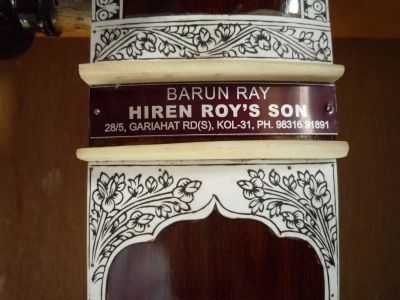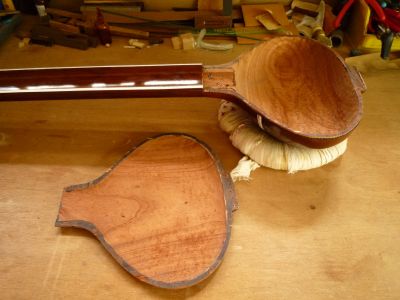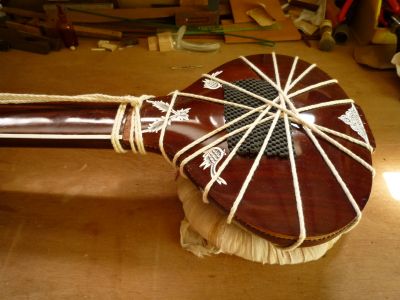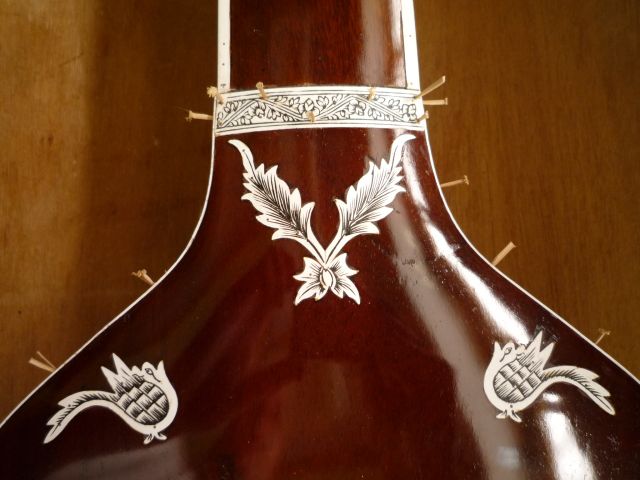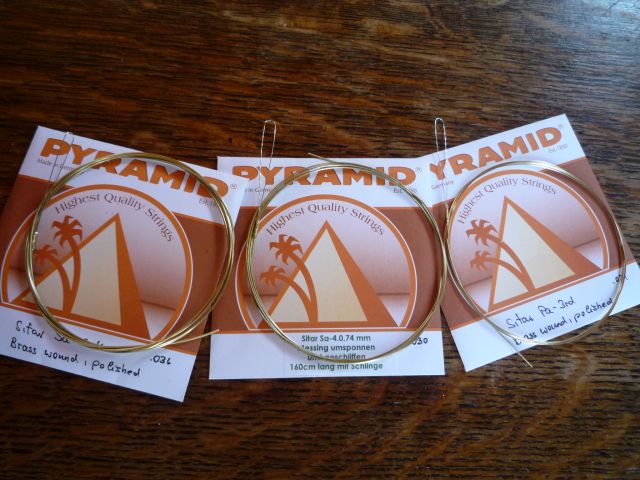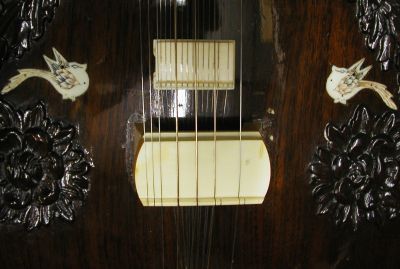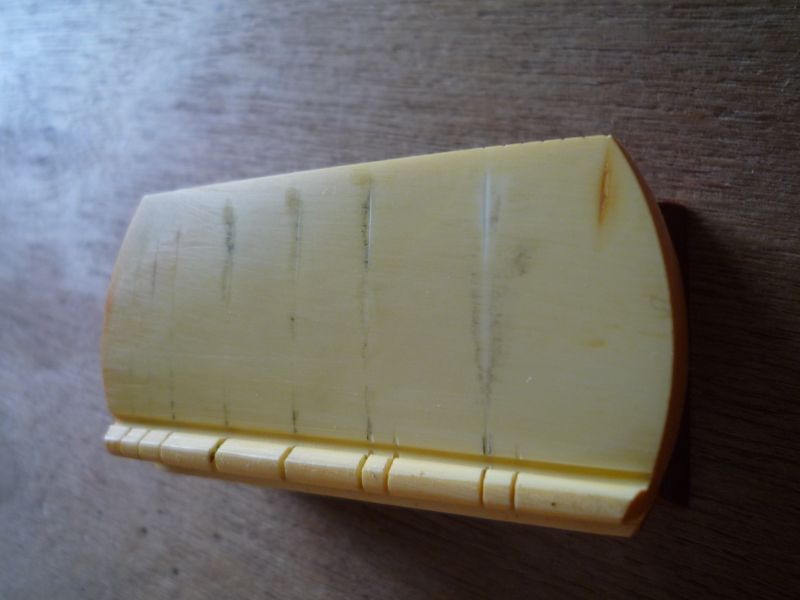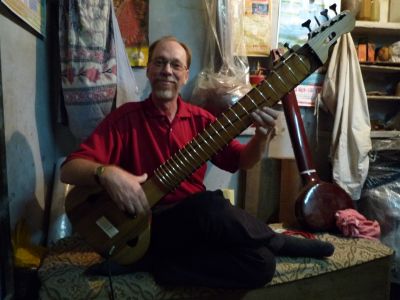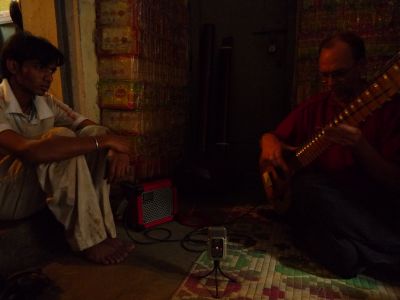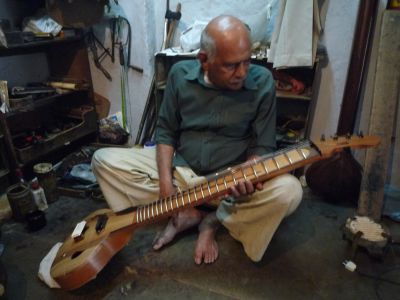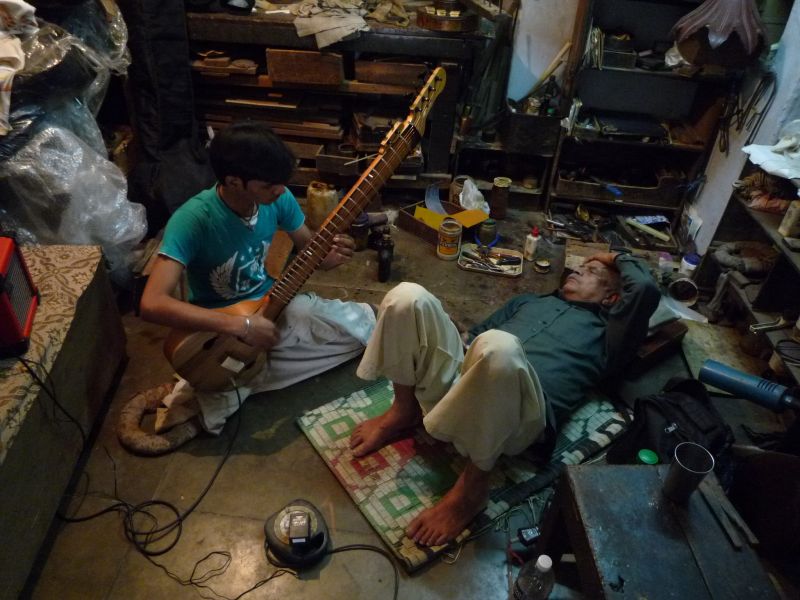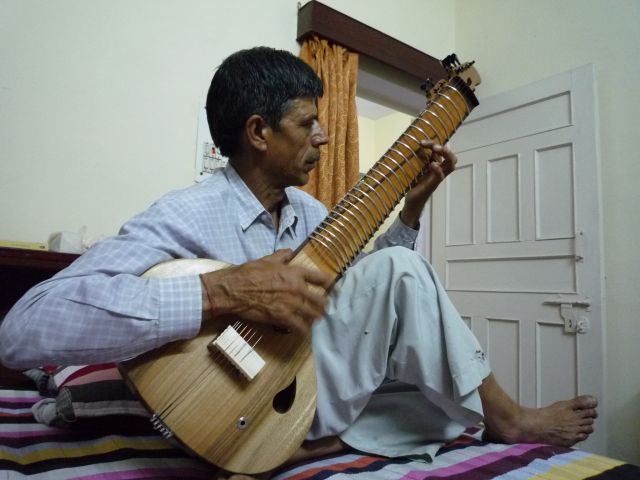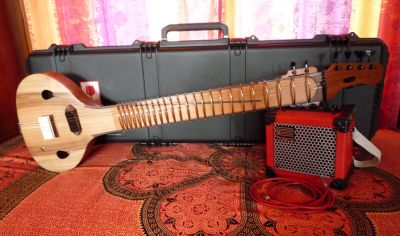I arrived safe and well at Indira Gandhi Airport Terminal in New Delhi. Also my new SAS-02 in its solid stormcase came out unharmed. It was past midnight when we finally entered my dearest Hari Chand’s house in Dashrathpuri, so everybody went straight to bed…
The next morning I was very eager to show my instrument to my beloved friend and teacher. We started this project together in august 2003, while he was on a visit in my house in Bierbeek. At that time Hariji was an essential help to me in making the first solid body sitar SBS-01. This prototype has been tested by many of my sitar playing friends in Belgium, but Hari Chand never saw even this instrument completed. Immediately after this original and very promising experiment I started making plans for a series of new style sitars as can be seen on this blog (see tags SAS or SBS). In december 2008 this instruments trio was completed (see new style sitars).

Hari Chand was very impressed and uttermost pleased to finally see the result of my work. But, all this would never have been possible without his mastership and ever patient and precise teachings about this unique craftmanship to me. I will forever be grateful to him and his late brother Kartar Chand.

Soon Hariji’s young apprentice Rahul Gupta arrived in the shop and he played some nice tunes on the electric sitar during the noontime siësta. The Roland microCUBE -a very light and portable amp- is a fine companion to the Kent Armstrong Slimbucker™ Jazz guitar pickup. Rahul only had some minor problems getting used to the 24 pardas edition (“chromatic” as they say in India).

Later I visited S.Raj & Sanjeev Sharma at Raj Musicals, Rikhi Ram Sanjay Sharma and my good friend and N°1 jiwarimaster Kartar Chand Dhiman. They all examinated the SAS-02, thoroughly checking every parda on its position and meend playability but they could not detect any anomaly. Also the jiwari passed the serious tests. Most intriguing were the rather unusual selection of wood (walnut and mahogany), their finishing touch (danish oil) and the most accurate joints between the different parts. Minus points were noted to be the slight difference in weight and pure acoustic sound in comparison with a traditional sitar. But, it has never been my purpose to compete with a pure acoustic musical instrument. I only wanted to inspire the advanced and professional sitar players to a new world of sound.

